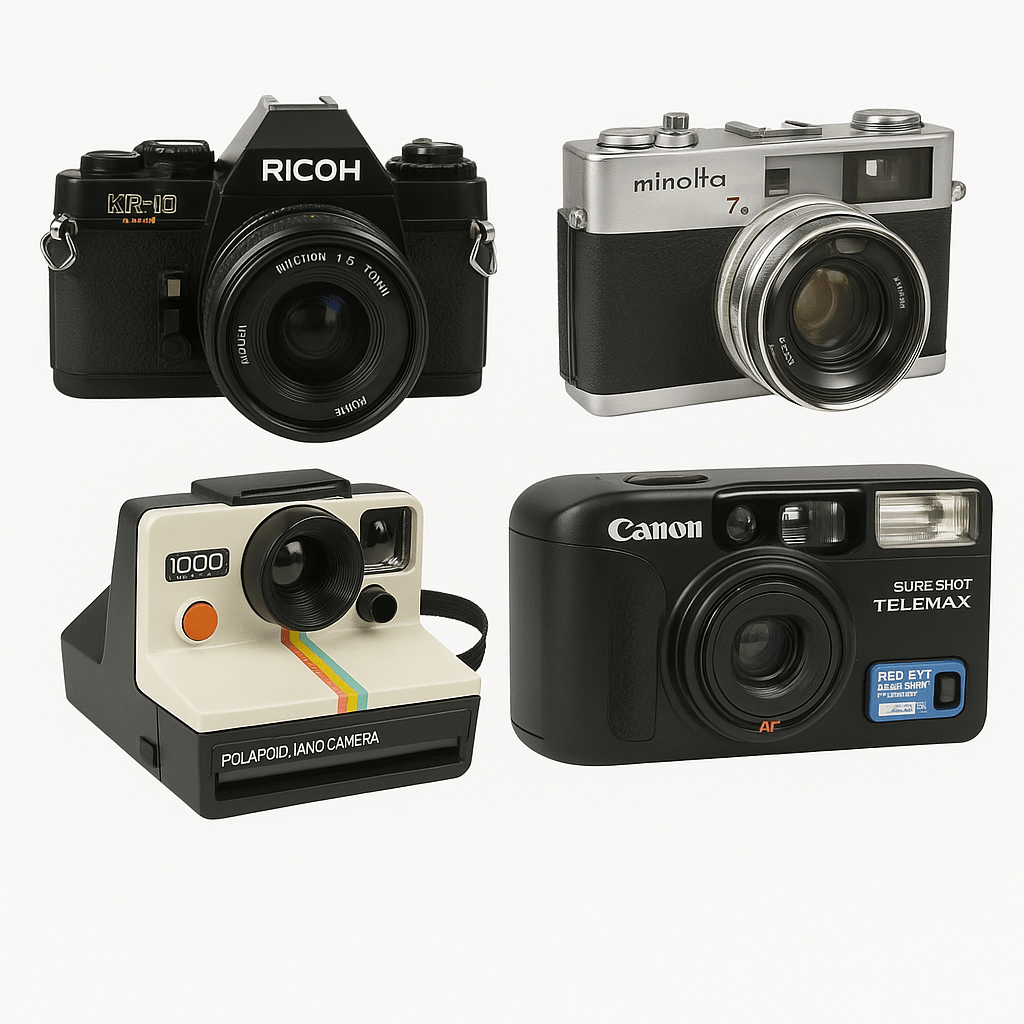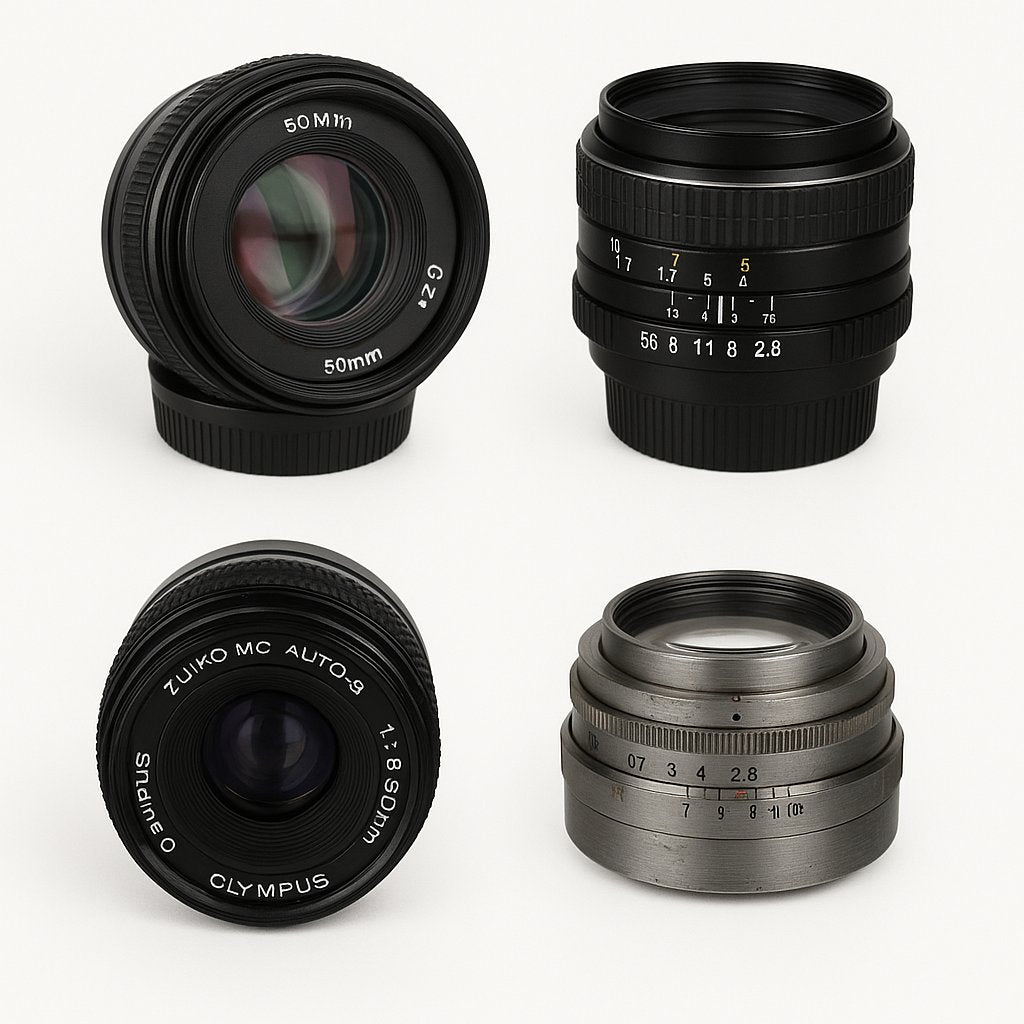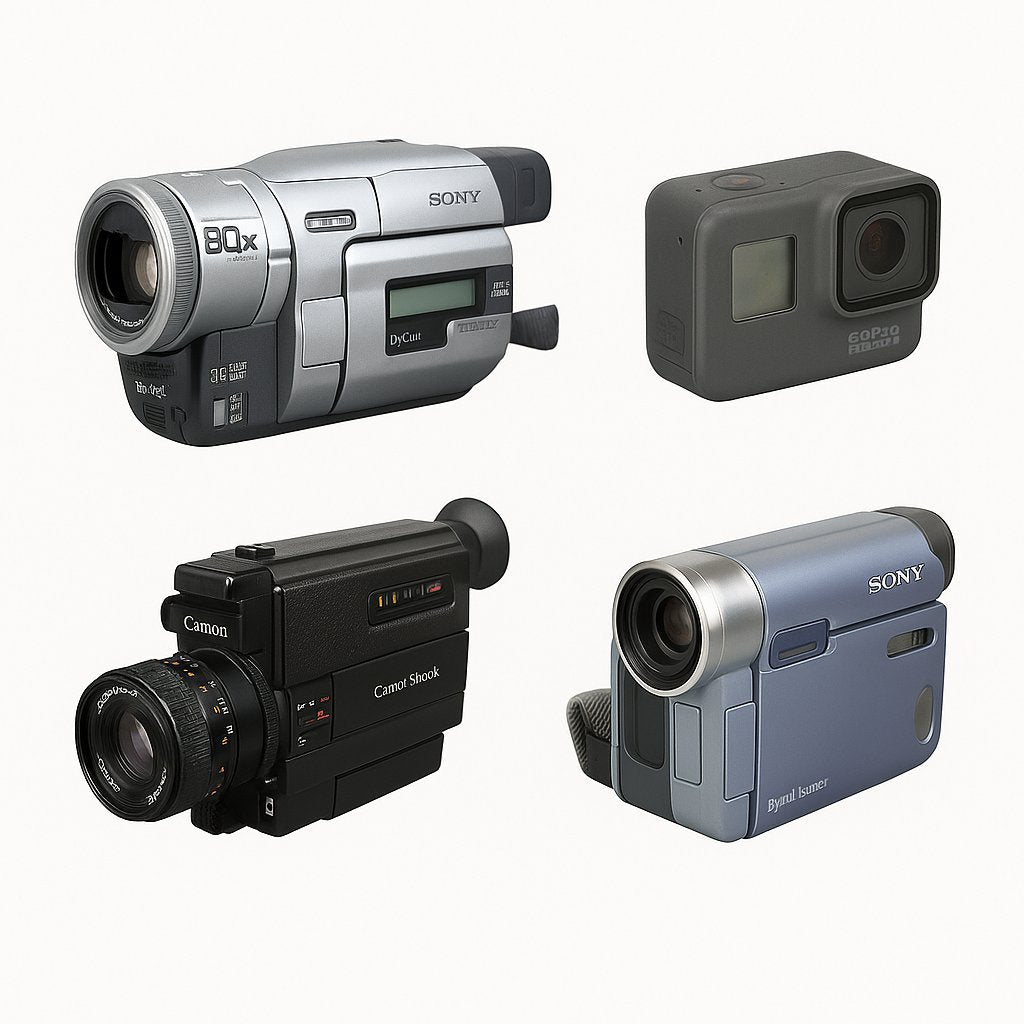Why the comeback matters—and how to achieve it sustainably with second-hand film gear.
Why Hollywood is re‑embracing the analog look in 2025
What you’ll get: the core drivers behind 2025’s film comeback and why it matters for your work.

Hollywood’s rediscovered the power of celluloid: the tactile grain, the gentle glow around highlights (halation), and the way motion breathes. After years of ultra‑clean digital, filmmakers—and audiences—are gravitating to images that feel authored and lived‑in.
- Creative drivers: texture, grain, organic motion, soft highlight roll‑off, and controlled halation.
- Cultural shift: viewers crave tactility and visual honesty over sterile perfection.
- Infrastructure: film stocks, labs, and HDR scanning pipelines have stabilized and scaled.
- Branding: “shot on film” signals craft, permanence, and premium intent.
- Sustainability: reusing and maintaining existing gear keeps products in circulation and out of landfills.
On‑set moment: For a 2025 pilot, a DP chose 16mm to capture grit and closeness in cramped apartments. A vintage 25mm prime gave edges a gentle falloff, while a trusted lab’s HDR scans preserved highlight detail from candlelit scenes. The director called it “truthful texture.”
What the analog look really is: grain, color, motion
What you’ll get: a clear, practical breakdown of the aesthetics that define film.

- Grain vs noise: film grain varies in size and shape, reading as organic texture rather than digital speckle.
- Halation and bloom: bright points gently glow because light scatters in the emulsion; diffusion filters can enhance.
- Color rendition: dye layers and development bias give familiar skin tones and rich shadow hues.
- Motion cadence: subtle gate weave plus shutter characteristics make movement feel alive.
- Contrast and latitude: film compresses highlights gracefully; shadows keep mood without crushing.
The gear behind the look: formats and lenses Hollywood uses
What you’ll get: the formats, cameras, and optics that shape modern film aesthetics.
- Formats: Super 8 for diary energy; 16mm for grit; 35mm for mainstream narrative; 65mm for epic scale.
- Camera families: lightweight sync 16mm; reflex 35mm with reliable mags; specialty bodies for handheld/steadicam.
- Lenses: vintage spherical primes, classic zooms, and rehoused stills for character (flare, falloff, field curvature).
- Filters: diffusion, nets, and low‑con glass to shape halation and control contrast.
- Scanning: modern HDR scan workflows preserve negative latitude for flexible grades.
How to achieve the analog look today (practical paths)
What you’ll get: step‑by‑step ways to land the look—on film or hybrid—without waste.

Paths that work in 2025:
- Shoot film: 35mm/16mm motion for principal, or 35mm stills for tests and promos.
- Hybrid: digital capture with vintage glass, diffusion, and in‑camera practical bloom sources.
- Lighting: prioritize practicals and soft wrap; protect highlights to keep gentle roll‑off.
- Stocks/processing: pick speed for grain; use push/pull to nudge contrast and density.
- Post: avoid heavy NR; add grain overlays sparingly; use filmic contrast curves.
- Define the look with references: grain level, contrast, highlight behavior.
- Test a gray card, skin tones, night exteriors, and backlit highlights.
- Lens plan: one “character” lens and one clean lens for safety.
- Filtration kit: two diffusion strengths plus a low‑con option.
- Confirm lab, scan specs, and color workflow; note any LUTs.
- Backup: a digital body with similar lens characteristics.
Test‑day anecdote: We screened fresh scans from a quick camera test: neon signs, skin at sunset, and a gray card. The team picked a softer vintage 50mm and mild diffusion—the neon halated just enough, and skin kept micro‑contrast.
Ready to assemble a kit? Browse vintage lenses and Explore second-hand SLR film cameras to start testing.
Inspiration: Hollywood analog film style ideas to try
What you’ll get: five repeatable looks you can prototype this weekend.

- Daylight clarity: fine‑grain stock or clean glass, minimal filtration, open shadows.
- Neon nights: higher‑speed stock, practicals, and subtle diffusion for halation.
- Handheld intimacy: 16mm or Super 8‑inspired movement for personal scenes.
- Period feel: vintage glass, lower contrast, warmer shadows, gentle vignettes.
- Documentary edge: natural light, mixed color temps, and slight underexposure.
Quick review: best routes to the analog look (by use case)
What you’ll get: fast paths that match budget, pace, and skill level.
- Beginner: 35mm still SLR + 50mm; learn exposure and grain intent.
- Run‑and‑gun: compact 35mm point‑and‑shoot or lightweight body with reliable meter.
- Street/portraits: rangefinder for quiet operation and characterful glass.
- Narrative short: rent 16mm; test diffusion and vintage primes; plan scans.
- Music video: mixed media—Super 8 inserts, digital A‑cam, vintage lenses.
| Name | Best for | ISO/Spec | Look/Result | Latitude/Usability | Notes |
|---|---|---|---|---|---|
| Purist 35mm Film | Main narrative | 35mm neg; HDR scan | Fine grain, graceful highlights | High; robust in post | Plan stock, lab, and dailies |
| Super 16 | Grit, handheld intimacy | 16mm neg; 2–4K scan | Texture, movement “alive” | Moderate; watch exposure | Great in low‑key lighting |
| Hybrid Digital + Vintage | Speed and flexibility | Vintage glass + diffusion | Controlled halation, character | Very high; fast turnaround | Build LUT from film refs |
| Compact Rangefinder (Stills) | Tests, promos, mood boards | 35mm stills; lab scans | Authentic grain references | High; low footprint | Feeds grade and lighting |
Attribute ratings (0–5)
Indicative ratings to guide expectations; lighting, exposure, and processing drive the final result.
Quick decision
- Need premium skin tones and roll‑off? Choose Purist 35mm Film.
- Want grit and energy on a tighter footprint? Choose Super 16.
- Sprint schedule or low light? Choose Hybrid Digital + Vintage.
- Building a lookbook? Choose a Compact Rangefinder (Stills).
Buy smart: second‑hand picks to get the look
What you’ll get: sustainable kit building blocks and what to check before buying.
Stills first is a smart path: a 35mm SLR or rangefinder and a 50mm prime are cost‑efficient for testing and promo stills. Character lenses (older primes/zooms) add flare, glow, and gentle roll‑off. Don’t forget the kit glue: incident meter, ND set, diffusion, strap, and a light‑tight bag.
- Start small: one body, one prime, one filter—iterate from tests.
- Shop analog film cameras to find a reliable base.
- Check shutter speeds sound consistent across the range.
- Inspect light seals and mirror foam for stickiness or crumble.
- Test the meter against a phone app or handheld meter.
- Advance and rewind: smooth transport, no scratching.
- Lens check: clean aperture blades, smooth focus, no haze or fungus.
Buyer win: We found a clean second‑hand SLR, replaced the light seals in an evening, and shot a test roll the next morning—perfect halation on streetlights, exactly as intended.
Maintain your film gear: reliability for repeatable results
What you’ll get: simple routines that keep classic cameras running for decades.
- Preventative care: store dry, moderate temps; add silica packs.
- Light seals and lubrication: replace seals; avoid over‑oiling mechanisms.
- Battery sanity: use fresh, correct types; watch for corrosion.
- Transport: caps on; dust‑free bag; no pressure on focusing helicoids.
- Film handling: store stock cool; load in shade; label exposure notes.
- Blow dust, then wipe glass with a lens cloth; never dry‑wipe grit.
- Cycle shutters monthly to keep mechanisms limber.
- Keep a spare battery and small screwdriver in your kit.
- Date and label every roll with ISO, filtration, push/pull.
- Schedule a CLA if frame spacing or speeds drift.
Analog vs digital emulation: when to choose which
What you’ll get: a practical decision framework for format mixing.
- Choose film when highlight texture, grain feel, and archival intent lead.
- Choose digital emulation when turnaround, low‑light flexibility, or budget dominates.
- Blend formats: shoot hero beats on film; cover on digital with matched glass/filtration.
- Build LUTs from film scans to align digital footage.
Pros
- Film: unmatched highlight roll‑off and grain integrity.
- Hybrid: speed, low‑light elasticity, fewer reloads.
Cons
- Film: stock + processing + scans add logistics.
- Hybrid: easy to over‑polish; protect texture choices.
The sustainable upside of the analog revival
What you’ll get: why second‑hand film gear is a win for your look and the planet.
- Extending product life: second‑hand gear stays useful for decades.
- Lower e‑waste: mechanical cameras are repairable and serviceable.
- Community repair culture: seals, CLAs, and shared parts keep classics alive.
- Mindful consumption: buy once, maintain, and share within crews.
Hollywood’s 2025 analog wave isn’t just nostalgic—it’s an argument for durability and stewardship. Build a kit that outlives trends, and your images will, too.
FAQs
- Why is Hollywood re‑embracing the analog look in 2025?
- For creative distinctiveness and tactile texture, supported by mature labs and scanning. Film’s highlight behavior and grain remain hard to truly replicate.
- Which analog film cameras are popular in Hollywood now?
- Reliable 35mm and 16mm motion cameras for sync sound and handheld work, plus specialty lightweight bodies. Vintage primes/zooms and diffusion filters are common companions.
- How can filmmakers achieve the analog look today?
- Shoot film where possible; otherwise combine vintage lenses, diffusion, practical lighting, and film‑referenced grading. Test with stills, plan lab scans, and set a consistent color pipeline.
- Is the analog look more affordable than digital in 2025?
- It depends on scope. Film adds stock, processing, and scanning; digital is efficient at scale. Mixing formats and using second‑hand gear can keep costs reasonable.
Ready to test your analog look?
Shop certified second‑hand film cameras to start testing today.










0 comments